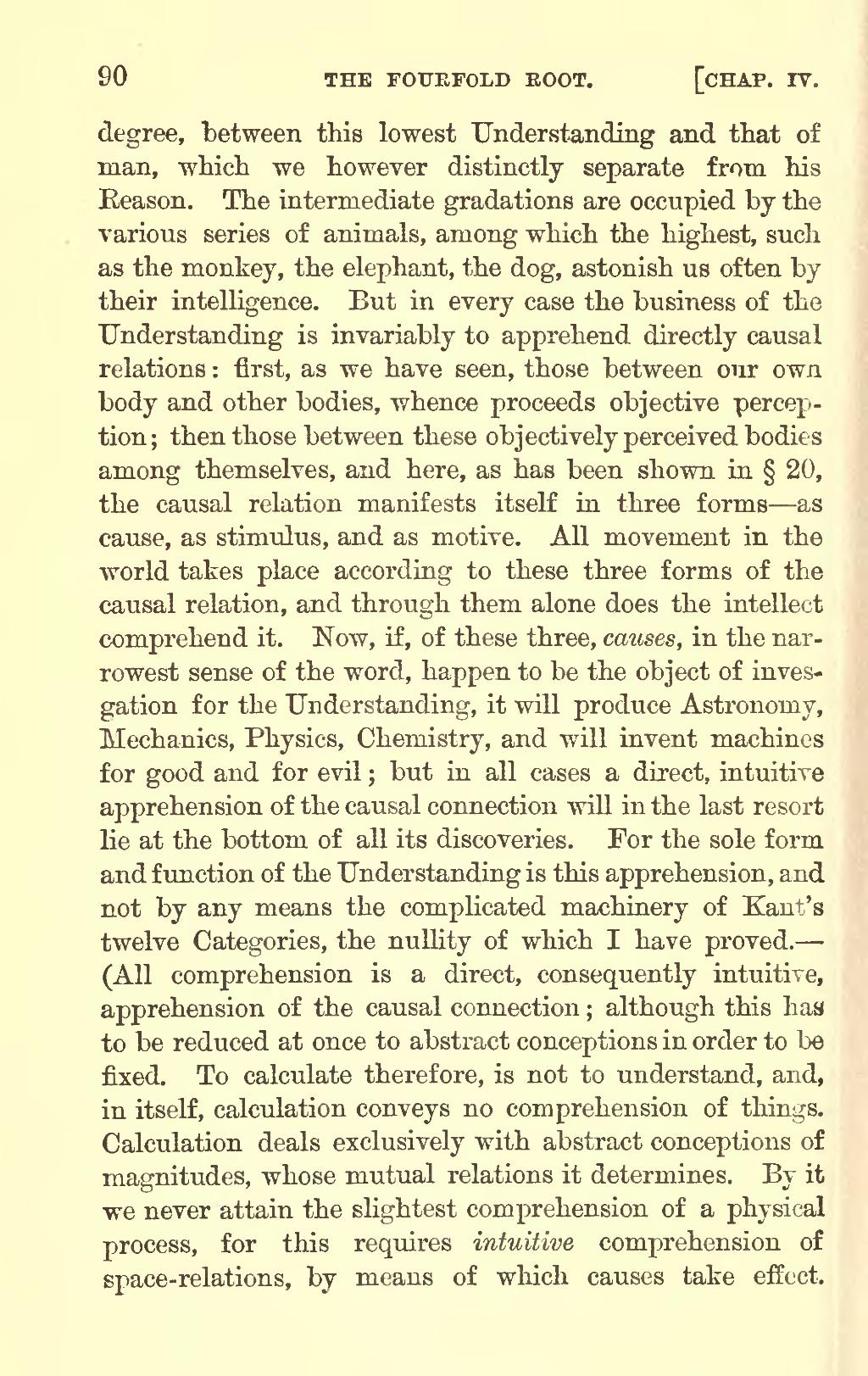degree, between this lowest Understanding and that of man, which we however distinctly separate from his Reason. The intermediate gradations are occupied by the various series of animals, among which the highest, such as the monkey, the elephant, the dog, astonish us often by their intelligence. But in every case the business of the Understanding is invariably to apprehend directly causal relations : first, as we have seen, those between our own body and other bodies, whence proceeds objective perception; then those between these objectively perceived bodies among themselves, and here, as has been shown in § 20, the causal relation manifests itself in three forms—as cause, as stimulus, and as motive. All movement in the world takes place according to these three forms of the causal relation, and through them alone does the intellect comprehend it. Now, if, of these three, causes, in the narrowest sense of the word, happen to be the object of invesgation for the Understanding, it will produce Astronomy, Mechanics, Physics, Chemistry, and will invent machines for good and for evil ; but in all cases a direct, intuitive apprehension of the causal connection will in the last resort lie at the bottom of all its discoveries. For the sole form and function of the Understanding is this apprehension, and not by any means the complicated machinery of Kant's twelve Categories, the nullity of which I have proved.—(All comprehension is a direct, consequently intuitive, apprehension of the causal connection ; although this has to be reduced at once to abstract conceptions in order to be fixed. To calculate therefore, is not to understand, and, in itself, calculation conveys no comprehension of things. Calculation deals exclusively with abstract conceptions of magnitudes, whose mutual relations it determines. By it we never attain the slightest comprehension of a physical process, for this requires intuitive comprehension of space-relations, by means of which causes take effect.
Page:On the Fourfold Root, and On the Will in Nature.djvu/122
Appearance

